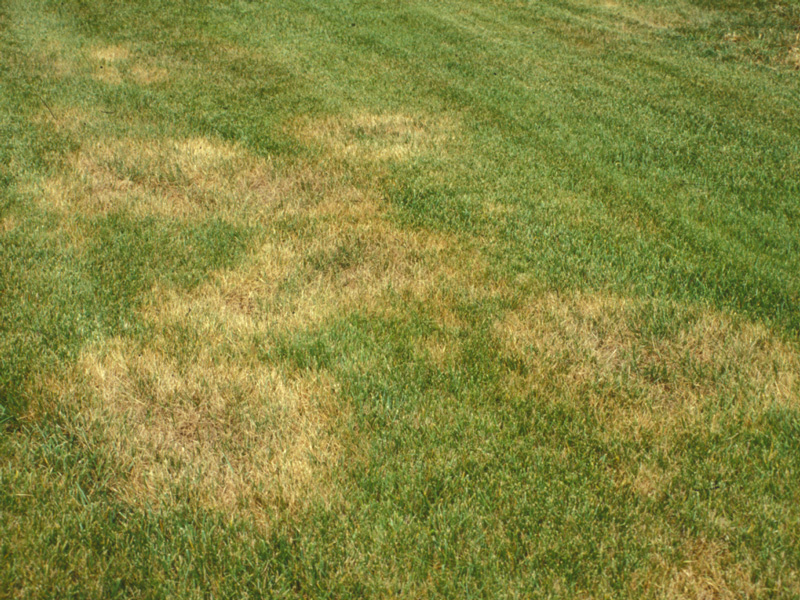As the weather changes and temperatures drop, changes to turfgrass may start to become apparent. Warm-season grasses will begin to show signs of dormancy, but along with this dormancy comes other challenges. Some diseases begin to emerge as turfgrass enters or leaves dormancy, so you should start looking for these symptoms in the fall. One such disease is spring dead spot (SDS), with symptoms arising upon spring green-up.
What is spring dead spot?
Spring dead spot is a pathogen that impacts bermudagrass lawns, sports fields and golf courses. Areas where cultural control is poor (compaction issues, excessive nitrogen, thatch) tend to have higher presence of SDS symptoms than low to no maintenance areas. Damaged areas show up as large dead patches in early spring, around the time of spring green-up. Unfortunately, the dead patches look like they are late greening up from dormancy, but in reality the area was killed by the SDS pathogen during the winter.
Best practices for controlling spring dead spot
Research has shown that high levels of organic matter, compaction and other poor cultural practices can increase the likelihood of SDS. Also, the nitrogen source used in your fertility program can play a large impact in controlling SDS.
If you have an area consistently impacted by SDS every year, it is recommended that you send a sample into your local extension office to get the exact SDS pathogen identified. You can then select the nitrogen source appropriate for managing your bermudagrass.
Chemical control for spring dead spot
The best chemical control of the SDS pathogen occurs when turf managers utilize a preventative fungicide program in the fall. Patches will typically occur in the same areas year after year and may be worth marking during summer months to prevent the need for wall-to-wall fungicide applications.
For a preventative program, try fungicides like Enclave from Control Solutions Inc., available at your local Ewing branch, or PBI Gordon’s Kabuto, available for special order from Ewing.
Enclave application and product information:
- Two applications in the fall at 8 oz. per 1,000 square feet, 28 days apart
- Four active ingredients
- Multiple modes of action for resistance management
Kabuto application and product information:
- Active ingredient isofetamid provides unparalleled control of this disease
- Two applications in the fall at 2 oz. per 1,000 square feet and 1.2 oz. per 1,000 square feet
Have you had success with treating spring dead spot? What cultural controls have worked best? Share in the comments below!
[box]3 tips for safe and successful chemical applications
- Be sure to read and follow all labels.
- Wear personal protective equipment, including gloves, goggles, masks and clothing.
- Don’t spray on windy or rainy days, so you don’t have chemical drift or run off into an unintended area.[/box]






